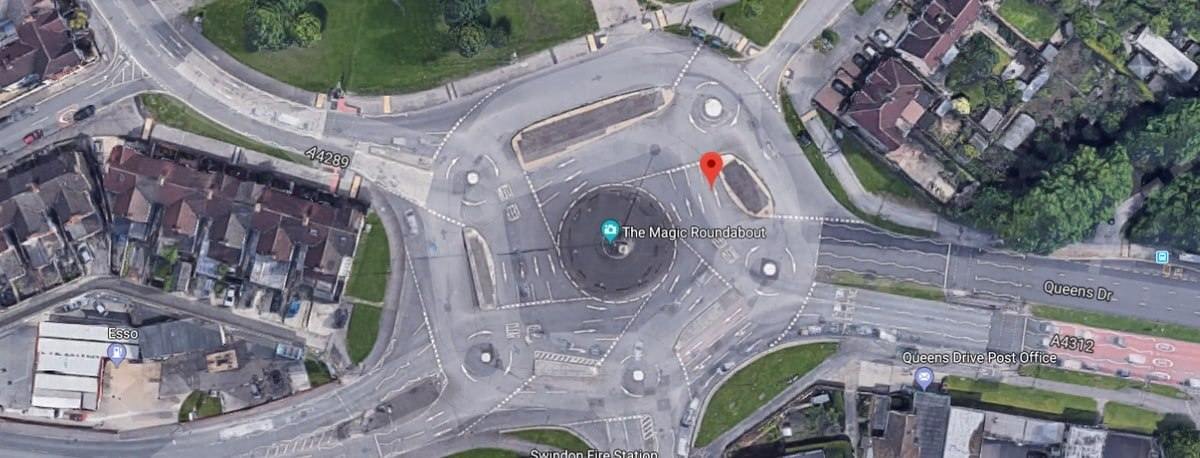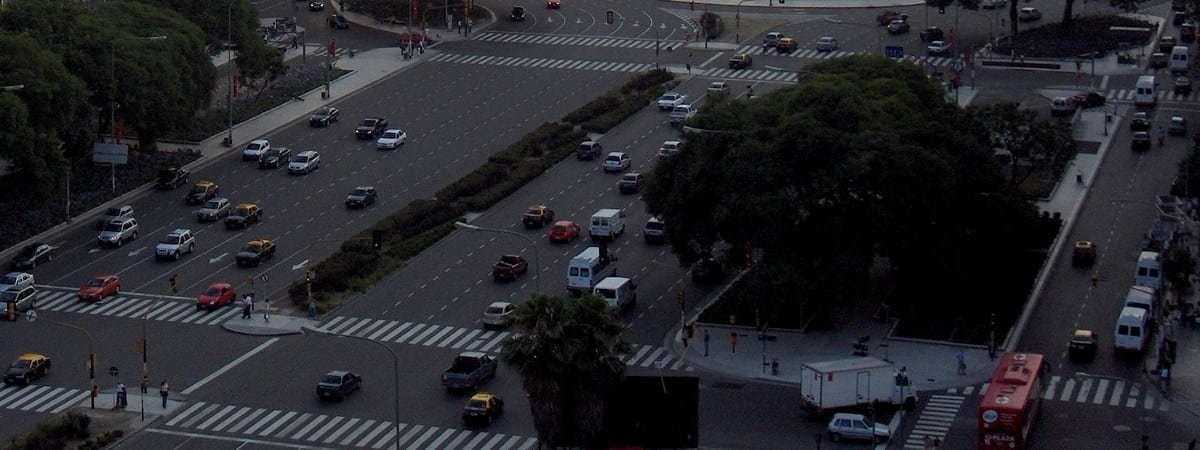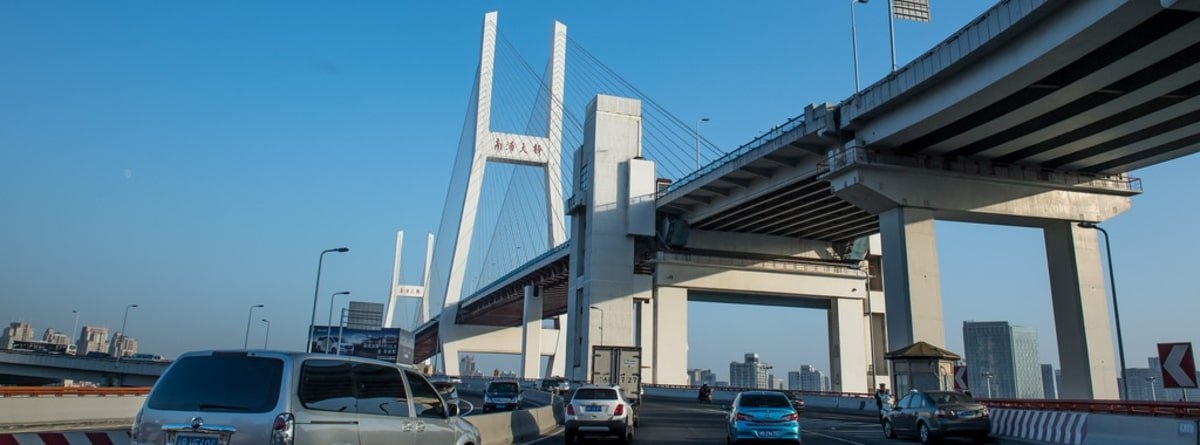By definition, a road junction is a location where vehicular traffic going in different directions can proceed in a controlled manner. Junctions are designed to minimise accidents and ensure a steady flow of traffic.
However, in most cases, big road junctions are nightmares creating long traffic jams. People can end up stuck in traffic for long periods and it can result in many being unable to arrive at their destination on time.
We’ve taken a look at five of the junctions that regularly feature in lists of the world’s busiest and most complex junctions.
The Magic Roundabout, Swindon, UK
The Magic Roundabout is located in Swindon town centre. It is made up of five mini-roundabouts arranged around a sixth central roundabout running anti-clockwise. Designed by Frank Blackmore from the British Transport and Road Research Lab it offered a revolutionary solution to traffic congestion. The idea was that by offering multiple paths to get to the same destination congestion would be reduced. It was constructed in 1972 and when it first opened it wasn’t permanently marked out meaning it could be reconfigured and fine-tuned.
The new layout was a success; it increased the potential through fare of traffic while decreasing commuters waiting time when compared to the junction it replaced.
Today the Magic Roundabout has its own Trip Advisor page and is regularly described as Swindon’s rollercoaster. It was voted the fourth scariest junction in Britain with many drivers, especially learners, having problems with it. However, its reputation is largely unfounded as the roundabout has had relatively few serious incidents. What’s more, Swindon as a whole has been named as one of the safest UK towns to drive in.

Image source Google Maps
De Julio Avenida, Buenos Aires, Argentina
At 140 meters across, the De Julio Avenida is the world’s widest avenue. The construction of the road took began in the ‘30s and was not completed until 1980. The architecture surrounding the avenue was specifically built to be reminiscent of Paris and pay homage to the Champs Elysees.
There are twelve lanes in total, six in each direction. There are multiple sets of traffic lights along the avenue so it is virtually impossible to cross in one go without getting stopped. In fact, it takes so long to get through the traffic lights there are street performers ready to alleviate you of your change at most sets of lights.
Taking your eyes off the road does come with risk as motorists regularly drift between lanes. Should you get in the way of someone else be prepared for a barrage of disgruntled and angry gesticulating from other motorists.

Judge Harry Pregerson Interchange, Los Angeles, California
The Judge Harry Pregerson Interchange is a stack interchange in California located near the Athens and Watts neighbourhoods in south Los Angeles and connects the 110 and 105. It has three levels of transfer facilities, including direct high occupancy vehicle connectors between the two freeways.
The interchange is named after the longest-serving judge in the history of the Ninth Circuit, Harry Pregerson and was officially opened over twenty years ago on 15th October 1993.
The interchange is 132ft at its highest point and offers breath-taking views across Los Angeles. It has featured in multiple films. In ‘Speed’ a bus is driven over an unfinished section of the interchange and miraculously lands safely on the other side. While in ‘La La Land’ the interchange features in the opening scenes and required director Damien Chazelle to block off the intersection for two days to shoot.

Gravelly Hill Interchange, Birmingham, UK
Gravelly Hill Interchange is junction 56 of the M6 motorway and is more commonly known as the ‘spaghetti junction’. It joins the M1, M5 and M6 motorways as well as providing access to the A38(M) Aston Expressway, A38(M) Tyburn Road, A5127 Lichfield Road/Gravelly Hill and several unclassified local roads in Birmingham.
The engineers building the interchange had to elevate 13.5 miles of the motorway to accommodate two railway lines, three canals and two rivers. The junction is split across five different levels, covers around thirty acres, serves eighteen routes and includes two and a half miles of slip roads. There are 46 signals, three electronic message signs and 25 emergency roadside phones along the interchange. So it is hardly surprising it made the Guinness Book of World Records as the most complex interchange on the British road system.
Highway Agency Traffic Officers attend approximately 20 incidents per week. This is largely made up of breakdowns however it does from time to time include more serious road traffic accidents.

Shanghai Nanpu Bridge Interchange, Shanghai, China
The Shanghai Nanpu Bridge was the first bridge built to cross the Huangpu River from central Shanghai. Construction began in 1988 and the work was finished just three years later in 1991.
The bridge is one of the longest cable-stayed bridges in the world at 8,346metres long. The main bridge is 30.35metres wide and has six lanes across so is able to deal with a considerable amount of traffic. There is also a two-metre pedestrian walkway on either side of the main bridge which allows people to enjoy the scenery of the Huangpu River.
The spiral-shaped interchange at the Puxi side of the bridge makes the interchange one of the most distinctive structures in the world. It features three spirals and is the most rollercoaster-like experience you are likely to experience in a car. This distinctive design was chosen as the best way to make use of the available building space.
The Nanpu Bridge has been a major contributor to the ongoing and rapid development of the Pudong district. The bridge has now become a major tourist attraction, particularly at night when it lights up the district and is referred to as the golden dragon of Shanghai.
